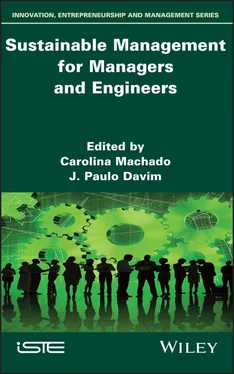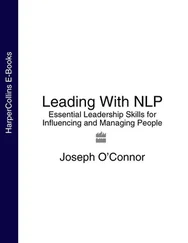1.2.4.2. The United Kingdom
In 2010, David Cameron established the Behavioural Insights Team (unofficially known as the Nudge Unit) led by David Halpern, which has been promoting initiatives related to public health, energy, financial fraud, and charitable contributions. “Since its formation, it has successfully designed several interventions” and, in 2012, it was estimated that the Nudge Unit would save over GBP 300 million in the next five years [BEH 11]. The Behavioural Insights Team is now independent of the UK government and works in partnership with local authorities, businesses, charities and governments in 31 countries. Areas of intervention cover a broad range, including education, equality, health, wellbeing, energy, environmentalism and sustainability [BEH 18].
1.2.4.3. The European Union
The European Union has also used behavioral insights in policy initiatives. The European Commission first used such insights to inform policymaking back in 2009 when it acknowledged the impact of default options. It approved a Directive on Consumer Rights that included a clause to limit the use of default options in consumer contracts. Thereafter, behavioral insights have been explored in several policy fields and, in 2014, the European Commission created the Foresight and Behavioural Insights Unit within its Joint Research Centre [LOU 16]. Several countries in the European Union, such as the Netherlands and Germany, have also developed and implemented national policy initiatives based on behavioral insights.
1.2.4.4. The Organization for Economic Co-operation and Development
The Organization for Economic Co-operation and Development (OECD) also highlights how behavioral economics can be applied to regulatory policy across the world. In 2014, the OECD classified this understanding as critical for businesses and governments, presented the description of several successful behaviorally-informed policies, and urged their broader dissemination [PET 14].
In 2015, the World Bank addressed the need to understand human behavior and apply that understanding to economic development, early childhood development, household finance, productivity, health and climate change [WOR 15]. The World Bank pursues better solutions in policymaking to achieve development, particularly for those who are in regions of extreme poverty. Understanding the context of the regions is considered critical for successful interventions for behavioral change.
1.2.4.6. The United Arab Emirates
In 2016, the United Arab Emirates (UAE) appointed a Minister of State for Happiness and Wellbeing who supervised plans, programs and policies to achieve a happier society. The responsibility of this office is to align and drive government policy to create social good and satisfaction 2 . The program consists of five pillars: the science of happiness and positivity, mindfulness, leading a happy team, happiness and policies in government work, and measuring happiness. The minister’s goal is to make the country among the top five happiest in the world by 2021 by harmonizing all government plans, programs and policies. In 2019, as per the United Nations World Happiness Report, the UAE ranked 21st among 157 countries. Interestingly, one factor that influences the classification is the freedom to make life choices, in which the UAE was ranked fourth.
1.2.4.7. Other initiatives worldwide
Nudging has also gained increased relevance among companies and micro-initiatives that, based on individual insight, generate behavioral change toward healthier, wealthier, or more sustainable choices. Companies and governments are widely taking advantage of behavioral science. Those designing nudging interventions can draw on apparently trivial clues and characteristics of the environment, which people are often not aware of. By adjusting the social context, emotions, mental shortcuts and automatic responses jointly with small stimuli, nudges can keep people on a better path. Protecting individuals from themselves and others, while maintaining freedom of choice, is a puzzle that introduces new challenges and ethical concerns.
1.3. Nudging for sustainability
1.3.1. Nudging tools for sustainable behavior
Nudging is often described as the application of behavioral economics. However, the systematic application of nudging to macroeconomics and management is still rare. Using behavioral change to promote sustainability involves approaches that can be applied in several areas, such as consuming, saving, investing and productivity.
Nudging uses different sets of behavioral insights and we distinguish between two kinds of nudges: heuristics-based nudging and information-based nudging.
1.3.1.1. Heuristics-based nudging
Heuristics-based nudging acts mainly in automatic S1 for fast, everyday decisions where people rely on rules of thumb. Interventions to promote behavioral change can be designed to trigger or cease specific heuristics. It optimizes fast thinking and unconscious behavior.
1.3.1.2. Information-based nudging
Information-based nudging acts throughout conscious S2, creating awareness and encouraging reflexive thinking for better choices and behavior. It promotes information, learning and rational thinking in the decision-making process, to form true preferences.
Behavioral change and nudging initiatives can use both types of behavioral insights, despite their different nature.
1.3.2. Behavioral insights
The application of nudging has been increasingly generalized in recent years and some of the most common insights used as nudging tools range from simplification, framing and defaults to inform campaigns.
The following are some of the most disseminated insights in policy design.
Simplification is always the first step in the decision-making process. If you want to make someone do something, make it simple and easy. The message or action should be short and focused on improving efficiency.
Simplification heuristics are generally used due to constraints of cognitive resources, attention, processing capacity, and memory [HIR 01]. Individuals often ignore information and create intentional selective barriers to focus only on some relevant features of the decision process [GOL 99].
Nudging initiatives based on simplification must be easy but reliable. For instance, Newell and Siikamäki [NEW 14] demonstrate that simple information, such as on energy efficiency labels, is the most important element pointing to cost-efficient energy investments. Even when there are several relevant elements, individuals tend to use an aggregator indicator to make their decisions. For example, energy companies often provide indicators of energy consumption to encourage better usage. To be effective, information should be simple and the recommended action should also be easy to follow.
1.3.2.2. Environment or context
Slight changes in the environment may have a significant impact on the final choice. Tversky and Kahneman [TVE 74] claim that availability is an important heuristic for determining choice. People do not have access to the same information to the same degree and the more accessible the information, the more frequently it is considered. Collecting information occurs mostly at the unconscious level. However, decisions on how to use information with different levels of accessibility are made at the conscious level [GOL 99]. Depending on how important a decision is and how much a person wants to avoid bias and error, an individual will decide whether to access layers of information stored at less accessible levels. In this way, the term cognitive availability arises to refer to the information that is potentially accessible to the individual, but not currently available [TVE 73].
Читать дальше












